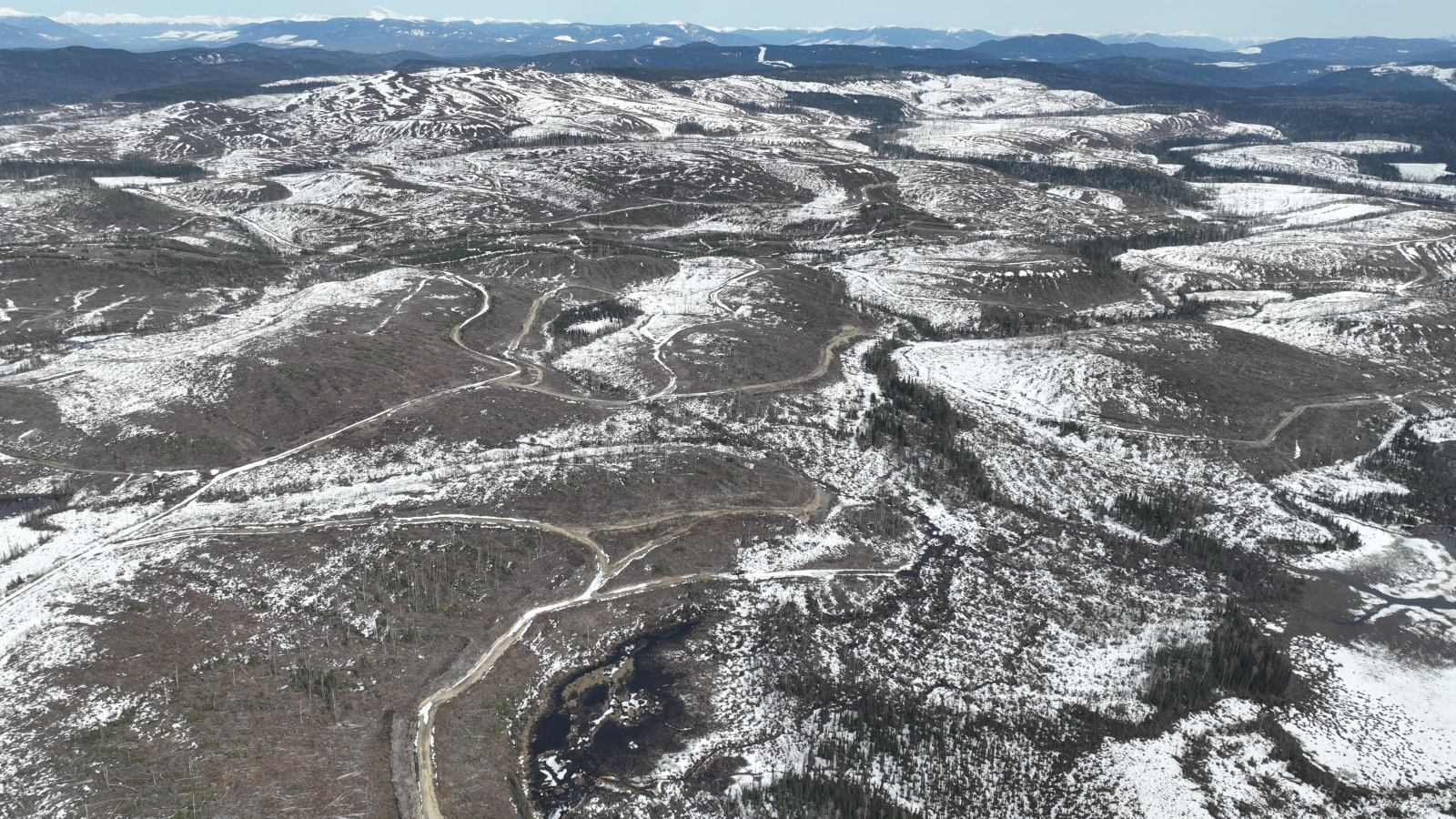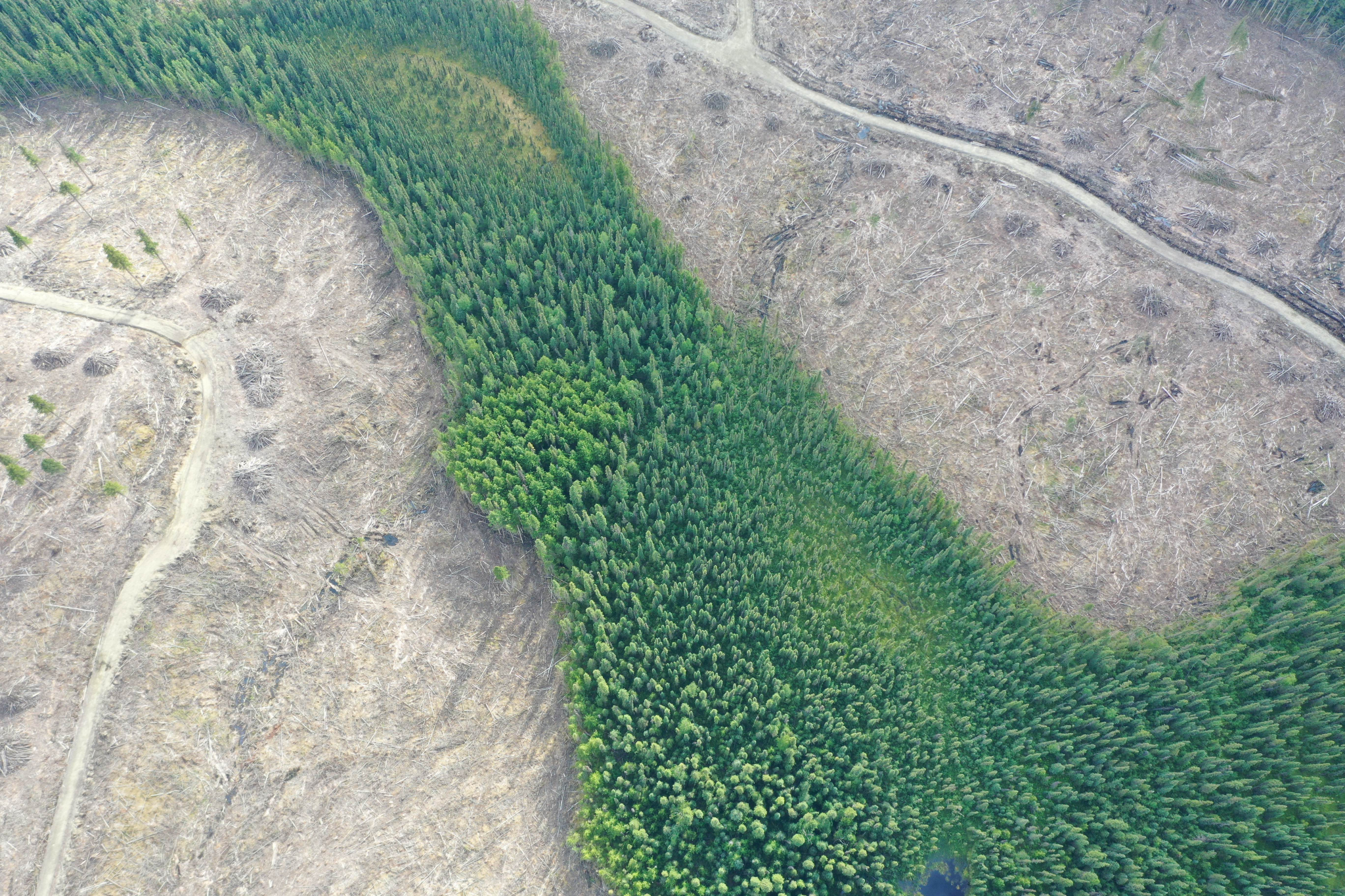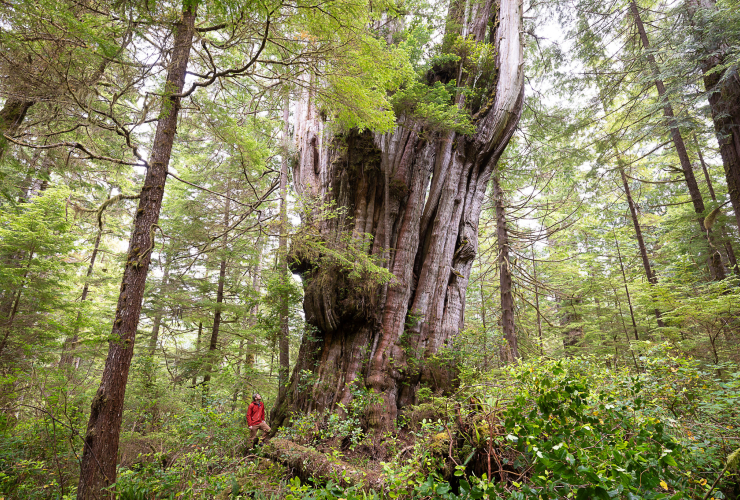The inventory of loss in British Columbia’s forests is long and includes accelerating declines in stored carbon, salmon populations and irreplaceable ecosystems like the inland temperate rainforest.
The B.C. government, which has the powers to staunch the bleeding, has launched a process to, in its words, “prioritize ecosystem health and biodiversity.” The goal, it says, is to create a new “framework” that makes ecosystem health and biodiversity a top priority and that legally enshrines this across all industrial sectors.
Such a change is long overdue. But it won’t happen unless the government confronts the central reason we are in this mess: decades of primary forest logging at a jaw-dropping pace and scale, all overseen by professional foresters.
Professional forestry in B.C. is and always has been about timber exploitation, and it will not deliver the new relationship with forests that the government’s proposed framework calls for unless we confront that reality and the mindset that enabled it.
What makes an ecosystem healthy?
Most properties of natural ecosystems are developed by the ecosystem itself, without human intervention. Natural ecosystems, like primary forests, are complex, self-organizing, self-regulating and, therefore, self-sustaining.
Ecosystems make and maintain themselves through the storage and movement of energy, beginning with sunlight travelling 152 million kilometres to enter the cells of a green leaf and ending with that same energy radiating back into space. The time elapsed between these events is often thousands and sometimes millions of years. In that time, sunlight combines with elements to become insects, songbirds, blueberries and grizzly bears.
Decaying fallen trees, deep soils and rare orchids are the products of time and the movement of energy. Biodiversity, the variety of life on Earth, is the product of the internal functioning of a healthy ecosystem.
The ability of primary forests to recover from extreme weather events, or to move water kilometres underground and through the air are examples of “emergent properties,” the features in nature that are unexpected and arise from the collaborative functioning of a complex system.
In healthy ecosystems, ecological and evolutionary influences prevail, like nutrients flowing from a decomposing fallen tree into the soil or the timing of a snowshoe hare’s coat changing colour.
Forests modified by industrial logging are artificial systems where these natural processes are interrupted. In the same way that fish farms do not feed wild orcas, tree plantations frequently fail to provide homes for overwintering deer, migrant birds and salamanders.
The brittle, unhealthy and depauperate landscapes created by forestry in B.C. have nothing in common with the primary forests they replaced.

Old-growth logging in north central B.C. in 2022. Photo by Conservation North
Command-and-control forestry
That nature can and should be “managed” is a deeply held belief in professional forestry. However, natural ecosystems do not require management. The pathological need to command and control nature was described by ecologists Crawford (Buzz) Holling and Gary Meffe in 1996.
Unfortunately, the lessons from their ground-breaking paper are even more relevant today than they were three decades ago because they were never heeded. In fact, some of the most aggressive logging has occurred in the decades following the paper’s publication.
Command-and-control natural resource management simplifies nature to ensure the maximum flow of raw materials from it. Mixed-severity fires, trees dying of natural causes and even the very existence of tree species for which there is no current economic value are seen as problems to be eliminated. The near-religious belief that natural forests need management is resulting in declining populations of fisher, northern goshawk, bull trout and hundreds of other species.
Nowhere is forestry’s command-and-control pathology more starkly visible than in the logging of primary forests following population increases of native insects like the mountain pine beetle and spruce bark beetle. In forestry, natural agents that cause tree death are seen as threats to maintaining “forest health.”
Ostensibly to improve “forest health,” professional forestry prescribes logging. The irony is that this vision of “forest health” leaves no place for wildlife that evolved over 10,000 years and that needs dead trees for their growth and survival. The contempt with which command-and-control forestry responds to nature’s rhythms can be seen throughout B.C.
And this contempt is hard-wired in. The Old Growth Strategic Review report, written by professional foresters in 2020 after decades of public outcry over the loss of primary forests, describes a zonation system where the proposed “protected zone” would allow for the “management of risk from disease or insects.”
But humans are not capable of reducing high insect populations through logging. And even if we were, such interventions lead to unhealthy ecosystems because they ignore the ecological truth that forests are built on dead trees.
Misappropriating the language of ecology
Forest ecologists Maxence Martin and Nicole Fenton note the forester’s main objective is to harvest wood. As such, forestry lacks the language to even describe elements of ecosystems and does not usually measure or inventory biodiversity on any reasonable level.
The cumulative failure of modern forestry to maintain biodiversity and ecosystem health is approaching a critical tipping point. Last month, the Ministry of Water, Lands and Resource Stewardship actually defended logging in areas of northern B.C. set aside for wildlife habitat, saying: “The specific areas … are part of small-scale harvest, including removing single trees, to address beetle kill and promote ecological resilience.”
Resilience is a scientific term defined as the time necessary for an ecosystem to regain its composition and structure (the full mix of tree sizes, ages and species) and function (the flow and cycle of energy and matter in a food web) after a disruption. By removing trees, physical structure is lost, the cycles of nutrients and energy are broken, and ecological resilience is lower than before it was logged.
By misusing language with specific meaning, government spokespeople and decision-makers reveal their own ecological illiteracy.

What a new paradigm must look like
The disgrace of professional forestry is not that it fails to accomplish its goals, but that it purports to be responsible in its dealings with other forms of life. In short, the beliefs and practices of professional forestry are antithetical to ecosystem health and biodiversity.
To leave some of nature's variety and abundance for future generations, a system of forest protection that declares remaining primary forests to be off-limits to logging is the only solution. We must restrict forestry to areas where it does the least damage, such as the vast landscapes of existing tree plantations and other previously industrially logged areas.
Indigenous Protected and Conserved Areas and parks are examples of what detaching intact nature from the threats of logging should look like, and ecological science points us towards how much land must be protected from extraction to ensure the health of our ecosystems.
Nature needs at least half of our forests outside the reach of forestry, and let’s face it, so do we.
Michelle Connolly is a forest disturbance ecologist who works with First Nations communities on natural climate solutions. She is also the director of Conservation North and lives in Lheidli T’enneh territory (Prince George, B.C.).
Herb Hammond is a forest ecologist and retired Registered Professional Forester with more than 45 years of experience in research, industry, teaching and consulting. He is the author of Seeing the Forest Among the Trees: The Case for Wholistic Forest Use (Polestar Press) and Maintaining Whole Systems on Earth’s Crown: Ecosystem-based Conservation Planning for the Boreal Forest (Silva Forest Foundation).
Kudos to Michelle and Herb
Kudos to Michelle and Herb for calling out the government and foresters! Can we continue this trend of publicly calling out the lies? The misappropriation of ecological language is a wily move by the BC government (aka professional foresters). Who is it fooling though? I scratch my head at so-called 'environmentalists' who seem to spend most of their time befriending the very people who are destroying the forests - the very people who have zero intention of stopping no matter what their friends at the non-profits were saying. It's obvious that befriending anyone in the forestry arena or those who work for the Ministry of Forests is pointless. They will continue to smile at us while they pad their wallets by destroying nature. Bureaucrats will never bite the hand that feeds them cushy industry jobs when they leave the bureaucracy. Just ask Diane Nicholls, the former Chief Forester of BC, who now works for Drax.
Good article. I'd like to
Good article. I'd like to point out that there's an issue partially submerged in it, that the article glances at but doesn't really put front and centre. The issue here is not that PEOPLE can't manage forests; lots of people in the past have done so. The issue is that WE can't manage forests. What's the difference between us and peoples of the past, both indigenous peoples of various sorts and many medieval Europeans, Shogunate Japanese and so on?
We're capitalists.
Which is to say, we put private profit for a few, generally in the very short term, ahead of broader or more long term benefits, whether for the people as a whole or the forest itself. We prioritize annual cut because it makes profits for a few capitalists. Our foresters don't have language to describe ecosystem health because they are there to serve the profits of a few really rich guys, not the ecosystem or broader community use.
Now that doesn't mean all efforts are futile until the revolution comes. No society is purely capitalist, or purely anything; the very existence of a central government even if it largely serves capitalism still represents a different sphere with different priorities. In our society, social democracy can rein capitalism in and pursue projects meant for the common good--just, not that much or that effectively or for all that long before being eroded, so that revolution would still be nice.







Comments